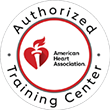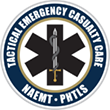Get Certified: American Heart Association CPR Courses
In today’s society, being ready for various kinds of emergencies is not simply good to know, but essential. Regardless of your status as a healthcare worker, a carer, or just an average citizen, it is important to learn how to do CPR and other basic first aid. Recognized throughout the United States, the American Heart Association (AHA) provides several types of CPR courses that are intended to provide participants with essential information in cases when they will have to help other people.

This article aims at discussing the essence of the AHA CPR courses, how the certifications are given, and the efforts made by organizations such as Code 3 Life to ensure that everyone undertakes the training.
What Is “The American Heart Institution” and Its Impact?
The American Heart Institution is also known as the American Heart Association or AHA and it is an organization that has as its main goal to reduce the effects of cardiovascular diseases and stroke. Since its inception 80 years ago, the AHA has been at the forefront of creating awareness of heart health, conducting research, as well as offering education and training to the people.

Probably one of the biggest focuses of the AHA’s mission can be attributed to CPR and first aid courses that are offered. The above-listed programs are enacted to ensure that anyone who undertakes the task is well-equipped with instructions to create positive change and give lives. CPR courses that are offered by AHA are widely considered the best in the world as far as teaching emergency cardiovascular care is concerned and the certification they offer is accepted all over the world.
What Are AHA CPR Courses?
The AHA CPR courses are designed in such a way that they will be taken by different people from all different backgrounds including the layman as well as the health professional. The courses are highly structured in a way that the participants are not only taught theories but rehearsed skills as well.
Basic Life Support (BLS) for Healthcare Providers: This course is most suitable to that class of healthcare professionals who would need to know how to conduct cardiopulmonary resuscitation both in hospital and outside the hospital setting. The BLS course covers essential topics such as high-quality CPR for adults, children, and infants, the use of an Automated External Defibrillator (AED), and relieving choking.
Heartsaver CPR AED: This course is designed for persons with a limited background in the medical field and needs to complete a course that provides course completion cards in CPR and AED use as a result of job or other requirements. This comprises CPR, the application of AED, and the handling of a choking case.
Heartsaver First Aid CPR AED: It is designed as a basic course that will cover first aid, CPR, and AED training at the same time. This is applicable for people, who in one way or another, are to handle first aid emergencies, as well as cardiac and breathing crises.
Advanced Cardiovascular Life Support (ACLS): ACLS targets healthcare practitioners who either lead or who are involved in the management of cardiac or pulmonary arrest, or other cardiovascular crises. Based on the BLS skills, the course underlines teamwork and communication, systems of care, and IPC.
Pediatric Advanced Life Support (PALS): This course is for any healthcare professional who gets involved in the emergency management of infants and children. It concerns the management of respiratory incidents, shock, and cardiopulmonary arrest in pediatric patients.
What Is The Importance of AHA Certification?
For any person in the field of emergency response, attaining AHA certification qualifies as a major achievement because it is an acknowledged standard. An AHA certification is a clear indication of the necessary knowledge and skills of cardiopulmonary rescue that assists in the enhancement of self-confidence in the certificate holder in performing the rescue acts appropriately and in instances of emergencies.

Of all employees, certification can be most relevant to those working in the field of healthcare. Most employers insist on their employees being AHA certified, as they have proved to have followed scientific standards and practices in their training. Working on the general population, AHA certification is one of those certifications that can play a great role in one’s employment.
What Is AHA First Aid?
It should be noted that CPR is but one of the interventions that make up for the emergency care that AHA first aid training offers.
First aid is emergency aid given to a person who is injured or suddenly becomes ill. First aid includes but is not limited to the management of wounds, fractures, burns, and other life-threatening conditions such as heart attack and stroke among others AHA offers first aid courses on a broad range of classes including but not limited to wounds and injuries, fractures, burn, and when the unexpected strikes – heart attacks, strokes and more.
AHA first aid training is very crucial to anyone who might be in a position to offer first aid services to fellow humans such as teachers, coaches, parents, and workplace safety officers. The training empowers the participant with knowledge on how to manage any patient until professional medical help can be sought, thus saving many lives.
How Is AHA Training Carried Out?
The AHA has in the recent past adopted conventional ways of learning to make its training more suitable. AHA training has always been provided in traditional classrooms, online or both classroom and online, with practical student participation.
The accelerated application of new technologies has resulted in the applicability of the so-called blended learning for those with a full schedule. Some of the tasks that have the cognitive components of the training can be taken online and the participants are allowed to access them at their convenience; the participants can be required to attend a face-to-face skills session where they can apply their skills and the performance is observed and evaluated. This makes it even possible to reach out to many people in need of life-saving training without having to compromise on the quality of the delivered training.

How Accessible Are American Heart Association Courses in the USA?
The AHA delivers its CPR and first aid courses out of numerous training facilities that it operates in the United States. They hence embrace; hospitals, community colleges, fire departments, and private organizations. Currently, there are American Heart Association courses in the USA, and this means that anyone can easily locate a course of his or her choice.
Also, the AHA strives to be as diverse as possible, and thus, the courses are offered in several languages, and courses are provided for the disabled. This guarantees that at no time will anyone be locked out from getting the training required to save the lives of others.
Code 3 Life: A Trusted Provider of AHA CPR Courses
As for delivery of high-quality CPR and First Aid services, Code 3 Life sets the pace among the best. Code 3 Life provides various AHA CPR courses such as BLS, CPR AED, Heaertsaver CPR AED, and ACLS. Their courses are delivered by seasoned tutors who have a passion for giving sound, quality, and up-to-date knowledge.
Code 3 Life knows the role of flexibility, and that is why they provide classes for different participants: traditional and online. Whether you are an HLTH professional writing an annual competencies exam, or someone learning CPR for the first time, Code 3 Life offers what you need for success.

Furthermore, Code 3 Life has adopted the mission of increasing the accessibility of the AHA training to as many people as possible. They utilize various premises to teach their courses and arrange with companies to train their employees. It is effective in the gain of making the survival training exercise more accessible to a larger population of people irrespective of where they are or what time they can make available to undertake the exercise.
You do not have to wait, be amongst the certified professionals and be ready to save a life tomorrow.
Frequently Asked Questions (FAQ)
1. Why is AHA CPR certification more credible than other CPR certifications?
The AHA CPR certification is recognized and valued all over the world because it is provided by using the current scientific norms to save lives. The American Heart Association is an organization with a focus on emergency cardiovascular care and therefore, the training is in congruence with evidence-based literature.
2. Restricted access recovery requires adequation in coupled ways; how often do I get my AHA CPR certification renewed?
AHA certifications are for two years from the time of which they were issued. After that period, one has to undertake a renewal course to check that one is conversant with current developments as well as the relevant guidelines.
3. Can I take AHA CPR courses if I have no prior medical training?
Yes, the AHA offers courses like Heartsaver CPR AED specifically designed for individuals with no medical background. These courses provide comprehensive training in basic lifesaving techniques that anyone can learn.
4. Are there any prerequisites for enrolling in an Advanced Cardiovascular Life Support (ACLS) course?
Yes, ACLS courses typically require that participants have a basic understanding of CPR and emergency cardiovascular care. It’s recommended that you complete a Basic Life Support (BLS) course before enrolling in ACLS.
5. What kind of hands-on practice will I get during an AHA CPR course?
During an AHA CPR course, you’ll engage in extensive hands-on practice using manikins, AED trainers, and other equipment. This practical experience is crucial for building the muscle memory needed to perform CPR effectively in real-life situations.
6. Will I receive a certification card after completing an AHA course with Code 3 Life?
Yes, upon successfully completing the course and passing the required assessments, you will receive an official AHA certification card, which is recognized nationwide and often required by employers.



